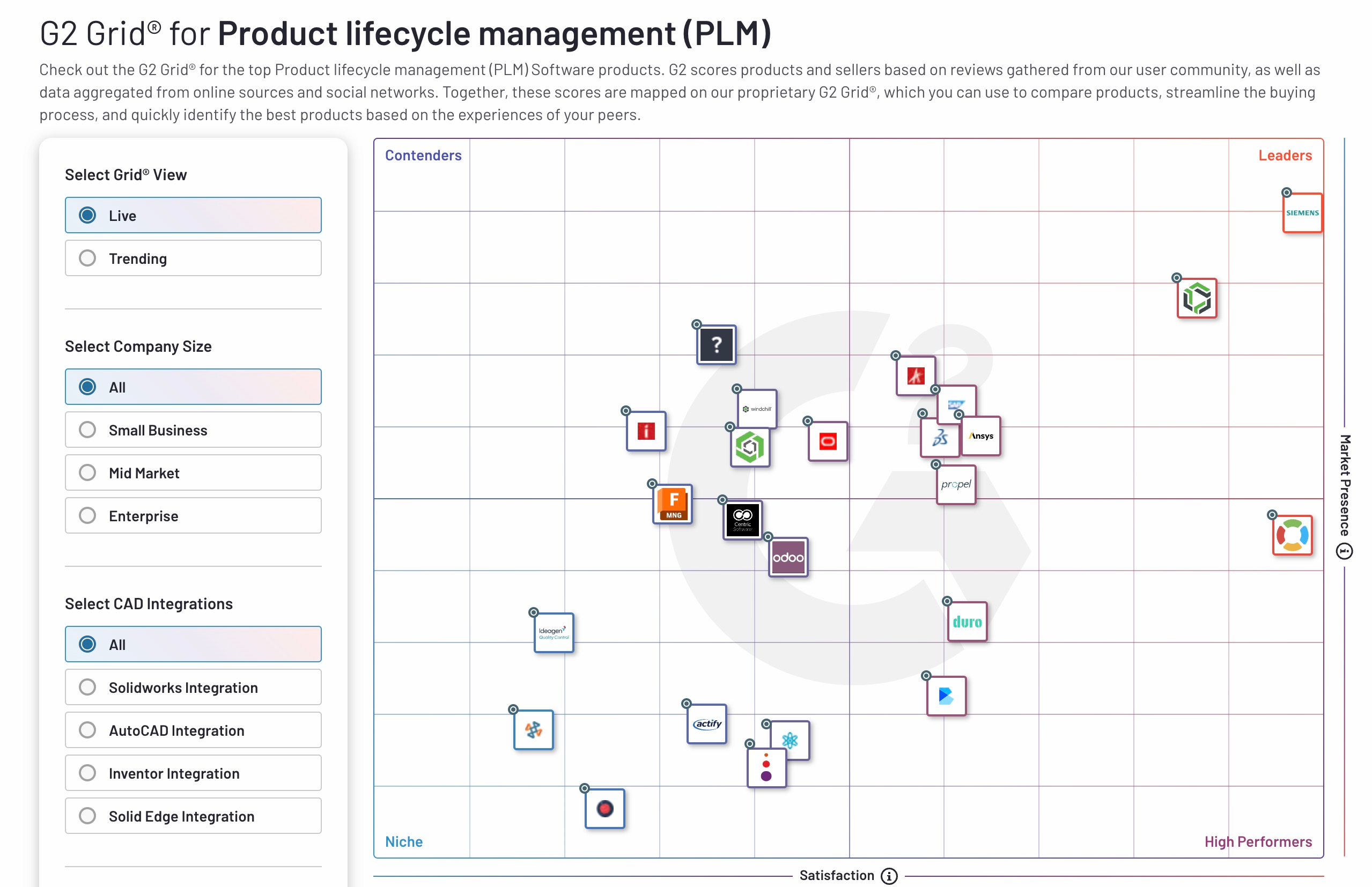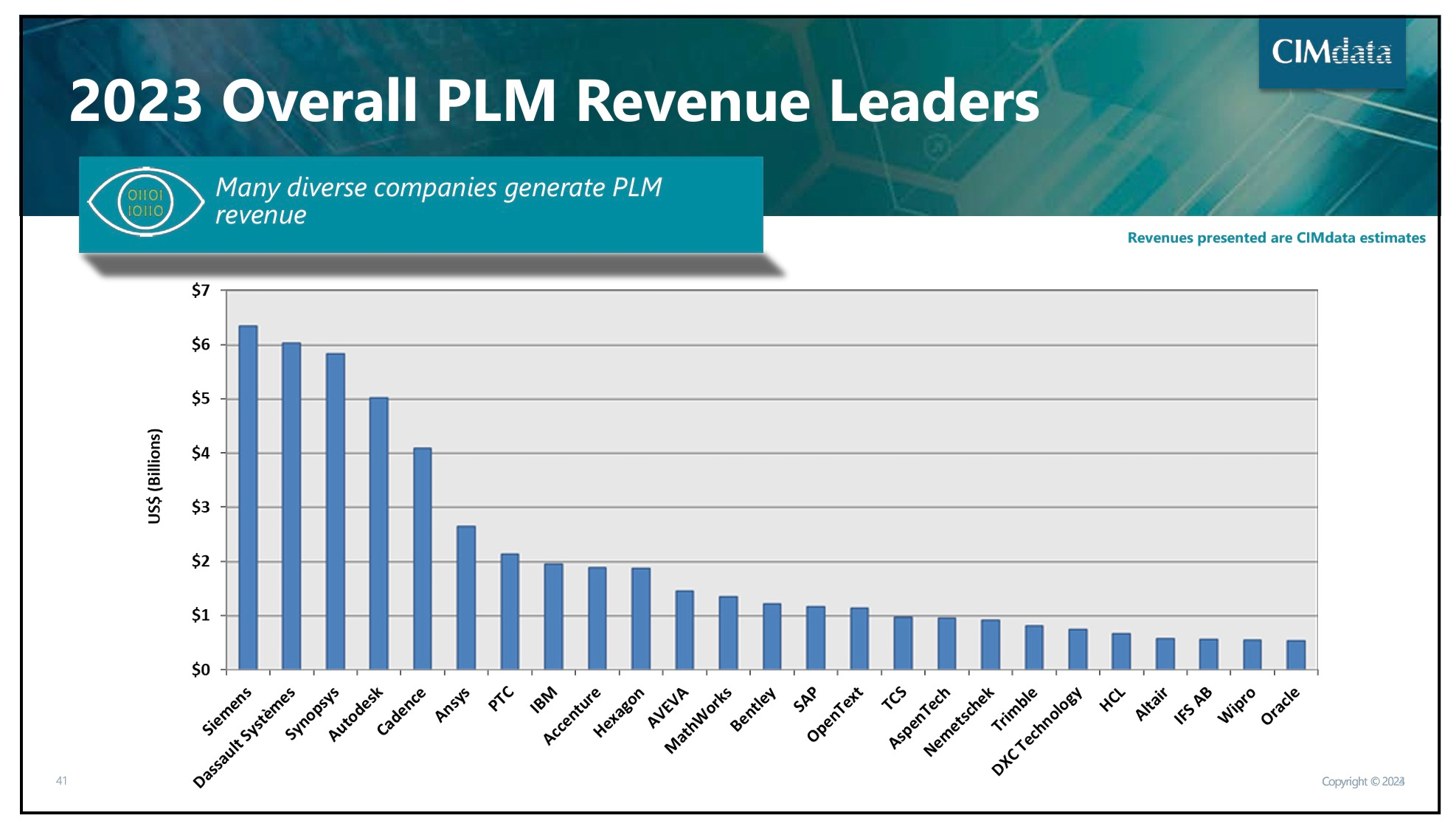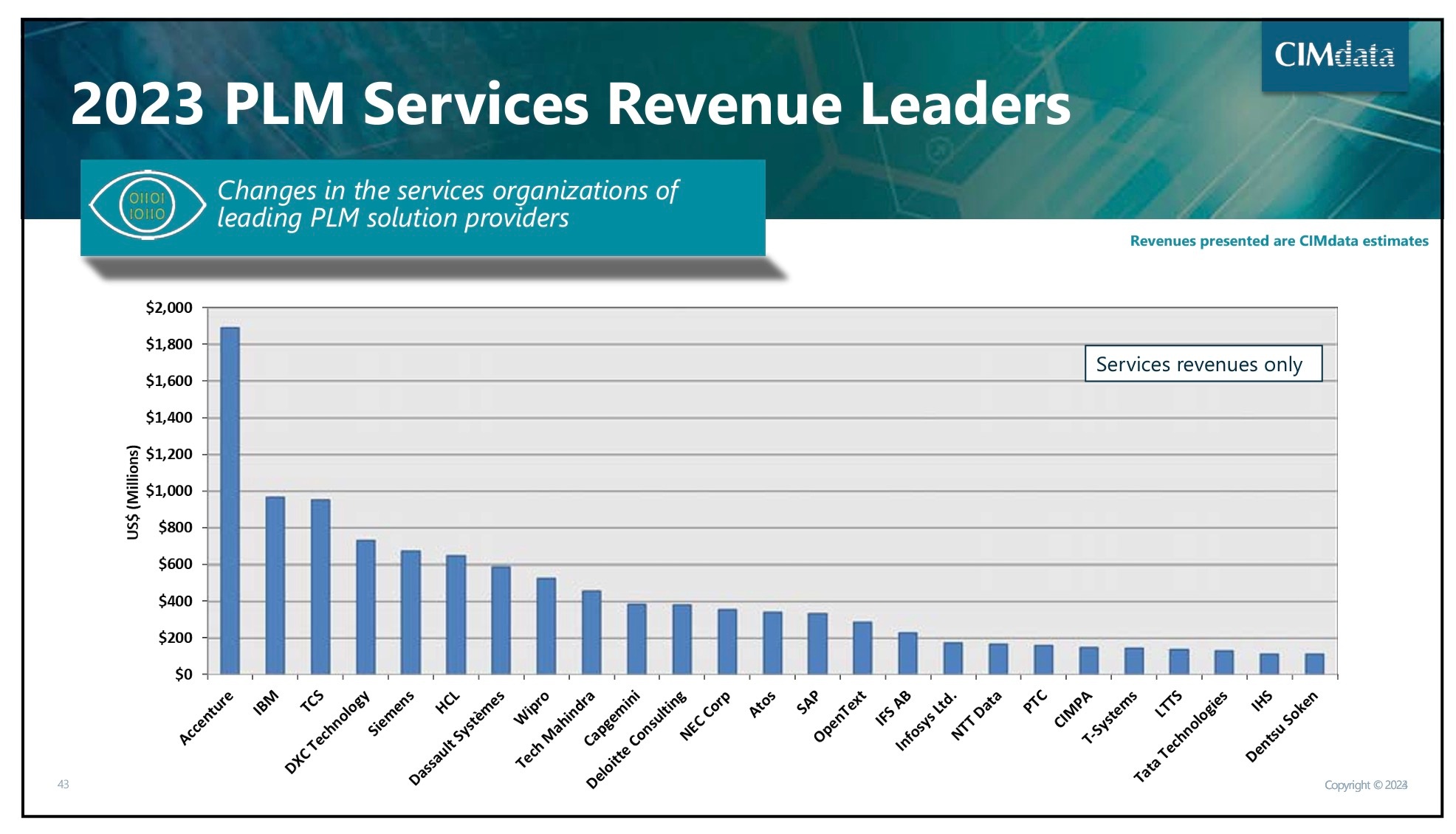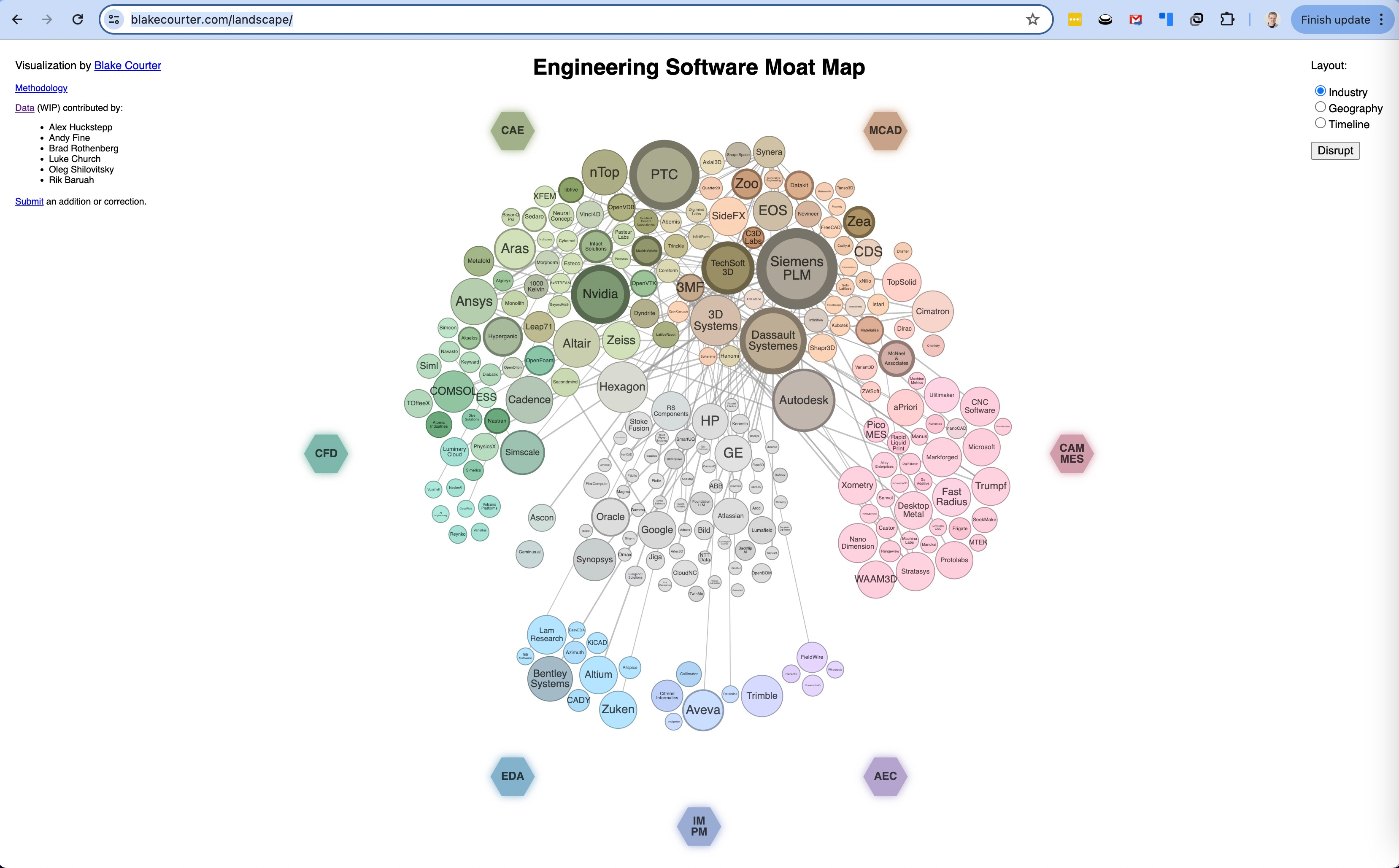
The summer slowdown time is a great opportunity to focus on the technology retooling and new tools section. It is an opportunity to bring your refresh business strategies and digital transformation journey. And this is a great time to check if your PLM technology and selection is up to speed. Six months ago, I shared my article – 2024 PLM Technology Selection Deconstructed: A guide for PLM Tech Architectures and Decision Makers. Today, I want to share some of my practical advises about how to navigate in the sea of PLM competition, technological options and different marketing.
I want to suggest 7 steps in PLM technology and system selection to help you to find the right technologies, solutions and vendors. To do so, I suggest to look on the following criteria:
- Business needs and processes
- Technologies evaluation
- Integration capabilities
- User experience and collaborative capabilities
- Flexibility and scalability
- Vendor market share, experience and industry vertical
- Cost and ROI
Below is my quite take on each of these criteria and vendor specific comments. I’m not trying to give you a comprehensive analysis of each vendor, functions and capabilities, but to give you some ideas about vendors’ focus, high and low points.
Understand Your Business Needs and Processes
It is always a good idea to outline your needs and business focus. From my experience, I can see two extreme scenarios here. The first, companies are rushing towards vendor selection without making a realistic assessment of the business needs. Which leads them to mistakes and premature decisions. The second option is over-engineering of requirements and trying to account for everything. How to get in the right balance? Here are my 4 questions I recommend every company to analyze before starting to select any technology or product.
- What are your primary business goals? (e.g., reducing time-to-market, improving product quality, enhancing collaboration, optimize cost, streamline collaboration, etc.)
- What specific challenges are you facing in your current product lifecycle management?
- What are the key processes that need to be managed or improved?
- What level of configuration and customization do you require?
The outcome of these analysis can be a conclusion about functional scope, ideas about technology and time horizon you’re looking solution for. Here are some additional ideas you can include into your assessment:
- Existing CAD, PDM, ERP technologies used by a company
- Engineering and manufacturing process (ETO, CTO, BTS, etc).
- Security and regulation requirements
Evaluate the Technology Landscape
The technological landscape of PLM is usually hard and deeply influenced by a strategical directions of the vendors. Here are 5 technological trends you need to analyze in 2024 to make your selection in a balanced way:
- Cloud based technologies. Although each vendor today is making some sort of “cloud”, I highly recommend you to get into more details and differentiator between SaaS, hosted, tenant model and various aspects of “platforms”, such as dependencies on IaaS (eg. AWS, Azure, etc), dependencies on databases and PaaS (eg. Salesforce, etc.)
- Integration capabilities. You cannot avoid it, but to think about how to integrate multiple systems you already use (eg. multiple CAD systems, ERPs, etc.) Don’t underestimate the importance of modern API availability (REST API), partners and integrators support.
- Zoom out and check what is the technological roadmap of the vendor. For the last decade, PLM tech vendor world was making a lot of M&As, which created redundancies, made some products obsolete. When making your technological and product choice check how the product of choice stands against other products of the same brand.
- Check future roadmaps for IoT, GenAI, Digital Thread, Digital Twin, Knowledge Graphs, and many other modern technological choices that will give you an idea about the vendor and where they go.
Integration Capabilities
A PLM system doesn’t operate in isolation; it needs to integrate seamlessly with engineering and design systems (CAD), and other enterprise systems such as ERP (Enterprise Resource Planning), CRM (Customer Relationship Management), and MES (Manufacturing Execution Systems). Assess the integration capabilities of the PLM solution, ensuring it can:
- Integrations with engineering and CAD
- Exchange data bi-directionally with other systems.
- Support standard integration protocols (e.g., REST APIs, Excel, CSV, PDF, ZIP, etc).
- Provide a unified view of product data across different systems.
Engineering with CAD systems is must. If you see a system that don’t support your CAD system platforms, you might decide to avoid it. This is must integration for modern PLM system.
Modern SaaS PLM platforms provides an easy way to connect to multiple other products via REST API, Integration as a Service platforms and easy export/import capabilities.
Intuitive User Experience and Data Collaboration
While integrations tell you how good a specific PLM platform interoperate with other systems, UI/UX and collaborative capabilities gives you an indication how good a specific PLM platform works with other users. A PLM system should have:
- An intuitive and user-friendly interface. Try to check if the UX paradigm is understood by your team members, and it is not something that will take heavy and steep learning curve.
- Robust collaboration tools that enable cross-functional teams to work together efficiently. Instant data sharing and real time data access.
- Mobile accessibility for on-the-go access to PLM data.
Flexibility and Scalability
The danger of PLM system is not to provide a way to configure its data model, add attribute, configure storage, lifecycle, approvals and many other elements such as UI elements, etc. As your business grows, so will your PLM needs. Choose a system that can scale with your business and offers flexibility in terms of adding and modification of data models, process configuration, supporting global scale and work of teams that are not located in one place and also work for multiple organizations.
Cost and ROI
While cost is always a consideration, it shouldn’t be the sole deciding factor. Assess the total cost of ownership (TCO), including:
- Initial implementation costs.
- Subscription or licensing fees.
- Maintenance and upgrade expenses
- Training and support cost
Consider the potential return on investment (ROI) in terms of improved productivity, reduced time-to-market, and enhanced product quality. The ROI speed must be a key criteria. For modern SaaS PLM, it must be coming to a few months (the top). Avoid the systems that cannot be launched in 2-3 months.
Vendor, Platforms and Products Available in 2024
This is the last step. I highly recommend to get prepared with all criteria and ideas I mentioned above before actually going down to the route of vendor and technologies selection. It might be overwhelming to select from dozen of vendors, I recommend you to go with maximum five vendors. Unless, you want to go for a year of selection and evaluation, define what you’re looking for. Navigating to one of the places where you can see all vendors and systems listed can be a good idea in 2024. My favorite will be G2 Crowd platform, which gives you as of today, a list of 98 vendors ranked by a diverse set of criteria. You can see top 15 in the trending list. Here is the PLM grid.

CIMdata, a leading PLM analytical company, gives you their list of vendors ranked by revenue both software vendors and service vendors.


Below, I put some of my comments about main group of vendors based on the criteria I mentioned. I will be mostly focusing on mindshare vendors as well as “leaders” and “high-performers” of G2 quadrant (the list is alphabetical).
Aras PLM
Mindshare PLM vendor. The newest member in “mindshare PLM” list, Aras Innovator was established itself as a flexible platform developed using Microsoft technologies and relying on Microsoft SQL database. It became super popular by executing “enterprise open source” strategy, which was a combination of free downloads and community of open source solutions. Recently trajectory to enterprise SaaS, Aras provide both hosted and on premise soltuions to their customers. The most valuable part of Aras is flexibility of their platform. I found Aras mostly focusing on large enterprise companies these days.
Autodesk
Mindshare PLM vendor. Manufacturing business of Autodesk is represented by a number of solutions that touching PDM/PLM domain. The oldest one, Autodesk Vault (acquired in 2000) is on premise PDM, well established system integrated with all Autodesk CAD systems (the best one will be Autodesk Inventor and Revit). Autodesk Fusion Manage (aka PLM360, Fusion Lifecycle) is a SaaS based offering (acquired in 2011 from Datastay) and it is a backbone of Autodesk cloud based PLM integrated with Autodesk Fusion. Upchain (acquired in 2021) originally sold separately, now it is part of Autodesk Fusion. All these three platforms are not sharing the same database and platform and eventually developed and maintained with Autodesk Platform Service (APS), which is a strategic cloud platform of Autodesk.
Dassault Systèmes
Mindshare PLM vendor. The strategic 3DEXPERIENCE Platform represents a key offering of DS. When it comes to PLM products, you can find multiple legacy on premise and SaaS solutions. Among them SOLIDWORKS PDM (Standard and Professional), both on prem, but hosted by some resellers, SOLIDWORKS 3DEXPERIENCE WORKS, ENOVIA SmarTeam (legacy product), and 3DEXPERIENCE ENOVIA.
Duro PLM
SaaS PLM focused on providing solutions for hardware teams. According to Duro, their intuitive cloud-native Product Lifecycle Management platform enables hardware teams to move with agility, make timely decisions and build disruptive products. Duro PLM provides API and customization only for their Enterprise subscription option.
OpenBOM (disclaimer, I’m co-founder and CEO)
SaaS data management and collaboration platform, OpenBOM provides a multit-tenant technology and services covering PDM, PLM and partially ERP functionality. The unique combination of PLM and ERP functions allows to use OpenBOM as a solution for SMB/SME and NPD of large enterprise. OpenBOM provides seamless integrations with all CAD systems as well as integrated with downstream systems – ERP, CRM, MES and others. OpenBOM provides API for all customers helping to get seamless data access and integration.
Oracle
Mindshare PLM vendor. Oracle PLM is represented by two generations of the products – old Oracle Agile PLM (acquired back in 2000s) and new cloud based Fusion platform, which is part of Oracle Manufacturing product suite. Recently announced discontinue of Agile PLM, Oracle is strategically moving all their customers to their cloud platform.
Propel PLM
SaaS PLM uniquely developed on top of Salesforce.com platform. Propel is focusing on PLM/PIM functions and provide an interesting blend of PLM functions. It calls itself PVM (Product Value Management) and includes PLM, PIM and QMS functions.
PTC
Mindshare PLM vendor. Historically, Windchill PLM is a flagship enterprise product lifecycle management solution from PTC. However, you can find also some historically acquired products that lives their independent lives (eg. FlexPLM). PTC Windchill is on premise and its Windchill+ sibling is hosted. Besides that, PTC acquired several SaaS products that provides PDM and PLM functions (Onshape – browser based CAD system, which has integrated PDM functions, but only limited to Onshape; Arena PLM – SaaS solution acquired by PTC in 2021). The strategy of PTC is Atlas SaaS Platform (heavily relying on Onshape tech stack).
SAP
Mindshare PLM vendor. SAP PLM is a module in SAP product suite that historically had different product versions. Recently introduced SAP Product Lifecycle Management solution, formerly known as SAP Enterprise Product Development is cloud-based offering heavily integrated in SAP core functions.
Siemens
Mindshare PLM vendor. Teamcenter is a flagship PLM product provided by Siemens in a variation of options – enterprise on premise solution, hosted (TeamcenterX) and, recently announced a simplified version Teamcenter X Essentials. While sharing the same name, these products can be different in their functions, capabilities, configuration and flexibility.
Engineering and manufacturing online services and systems
There is a growing number of companies these days that using SaaS model to deliver solution covering a specific service for engineering and manufacturing. Those companies are not providing PDM/PLM functions, but their services can become very valuable for engineering teams and manufacturing companies. A few companies to mentioned here Colab Software, Five Flute, Jiga, GetBild, and many others. I recommend you to check Blake Courter Engineering Software Moat Map.

What Is My Conclusion?
There is a growing number of PLM technologies and systems these days. Choosing the right PLM system in 2024 involves a careful balance of technology evaluation, understanding your unique business needs, and considering the long-term benefits. By focusing on the right features, integration capabilities, user experience, and vendor support, you can select a PLM system that drives innovation, enhances collaboration, and supports your business’s growth in the competitive manufacturing landscape. Just my thoughts…
Best, Oleg
Disclaimer: I’m co-founder and CEO of OpenBOM developing a digital-thread platform with cloud-native PDM & PLM capabilities to manage product data lifecycle and connect manufacturers, construction companies, and their supply chain networks. My opinion can be unintentionally biased.











